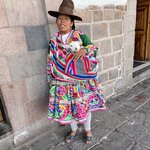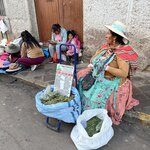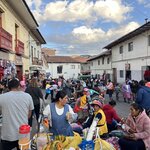Highlights
- Take in the sights, aromas, and tastes of Lima
- Spot Amazonian wildlife on guided jungle excursions
- Explore the traditions of Cusco & the Sacred Valley
- See the famed 15th-century Machu Picchu citadel ruins
- Delve into the culture and history of Lake Titicaca
Brief Itinerary
| Day | Highlights | Overnight |
|---|---|---|
| Day 1 | Arrival in Lima | Lima |
| Day 2 | Lima City & Food Tour | Lima |
| Day 3 | Into the Amazon: Lima - Puerto Maldonado - Reserva Amazonica | Puerto Maldonado |
| Day 4 | Jungle Excursions - Tres Chimbadas, Parrot Clay Lick, Botany Tour | Puerto Maldonado |
| Day 5 | Jungle Excursions - Farm, Dugout Canoe Tour, Fitzcarrald | Puerto Maldonado |
| Day 6 | Arriving in Cusco: Puerto Maldonado - Cusco | Cusco |
| Day 7 | Cusco City Tour | Cusco |
| Day 8 | Tour the Sacred Valley: Cusco - Pisac - Ollantaytambo | Ollantaytambo |
| Day 9 | Maras & Moray Tour & Train to Aguas Calientes | Aguas Calientes |
| Day 10 | Machu Picchu Excursion: Aguas Calientes - Machu Picchu - Cusco | Cusco |
| Day 11 | Rainbow Mountain (Mount Vinicunca) Hike | Cusco |
| Day 12 | Arriving in Puno: Cusco - Puno | Puno |
| Day 13 | Lake Titicaca Tour: Uros Floating Islands & Taquile Island | Puno |
| Day 14 | Fly from Puno to Lima, Depart Peru |
Detailed Itinerary
Day 1: Arrival in Lima

¡Bienvenidos! Welcome to Lima, Peru's largest city and central metropolitan hub, and home to one-third of the country's population. Located at the site of a pre-Columbian indigenous Ychsma settlement, which was conquered by the Inca empire in the 15th century and later by the Spanish conquistadores, Lima has a fascinating history and a diverse mix of cultures. Amerindian, European, Afro-Peruvian, and Asian—especially Chinese and Japanese—influences make Lima a dynamic and exciting city to explore.
Lima's breezy location on the Pacific Ocean and mild desert climate make it the perfect city for exploring on foot. Head downtown to mingle with locals, stretch your legs, and grab a bite to eat in one of the many award-winning restaurants.
Suggested activities include:
- Explore the historic center of Lima, a UNESCO World Heritage Site packed with fascinating Spanish architecture. Start with a scenic tour of the colonial downtown, which emanates from the main square. Stroll over to the 16th-century Cathedral, which took 80 years to construct and was built in the grandiose style of the Spanish Empire.
- Visit the Casa Aliaga, a colonial mansion granted by chief conquistador Francisco Pizarro to Jerónimo de Aliaga, one of his captains, in 1535. This is the only house from that era that still belongs to the same family.
- Stroll around the Pueblo Libre district to the privately owned Larco Museum of pre-Columbian art, housed in a beautifully restored viceregal mansion built over a 7th-century pre-Columbian pyramid. The museum boasts a vast pre-Colonial collection of gold and silver artifacts.
- In the evening, head to the eclectic "Love Park" in the upscale coastal district of Miraflores, where you can admire a huge kissing statue and beautiful mosaic walls. The park is built on the cliffs of Chorrillos and is a perfect place to enjoy a spectacular sunset over the Pacific.
- Enjoy a nightcap at an open-air cafe or restaurant in the diverse Miraflores neighborhood.
Day 2: Lima City & Food Tour

Spend the day discovering Lima through its food. With a vibrant combination of Indigenous American, African, Asian, and European culinary influences, Lima is one of the world's most impressive gastronomic and cultural centers.
Start the day early in Lima's Historical center to visit a local mercacado—a fresh food market—to taste the local produce and sample spices, fruits, and various baked bread. Taste different types of Piscos—a high proof brandy produced locally in the wine-making regions of Peru and Chile. Attend a cooking class and learn how to make ceviche, a fresh seafood dish marinated with salt and lime juice, and the traditional pisco sour—a Peruvian classic.
Stop for lunch at one of Lima's top restaurants and enjoy a delicious meal on a patio overlooking the Pacific ocean. Stroll to the bohemian district of Barranco—a popular oceanside neighborhood for artists, tourists, and locals alike—for a relaxed afternoon drinking coffee and sampling Peruvian desserts.
Day 3: Into the Amazon: Lima - Puerto Maldonado - Reserva Amazonica

This morning you will transfer from your hotel to the Lima airport for your flight to Puerto Maldonado.
Upon arrival at the Puerto Maldonado Airport, an agent will meet you and drive you to the local office for luggage storage. Here, all of your extra luggage will be locked away in a secure safe for more convenient boat travel. Begin to experience the enchantment of the rainforest as you take a 45-minute boat ride along the Madre de Dios River, to arrive at Inkaterra Reserva Amazonica lodge.
After a short briefing, settle into your beautiful cabaña and enjoy your lunch in the dining room. Take a siesta, share a refreshing tea time and get ready for the afternoon excursion. After gathering with your Inkaterra Explorer Guide, choose from the 14 different excursions available at the Inkaterra Reserva Amazonica.
On your first day, we recommend a guided walk along the trail system, into the Inkaterra Reserva Amazonica natural area, where you will discover the Amazon Basin. This trail offers an excellent introduction to the forest environment, winding past impressive trees such as the Shihuahuaco, and the strangely beautiful strangler fig, offering excellent opportunities for bird watching and observing exotic insects. We also recommend on the first night our Twilight River excursion — a guided afternoon boat ride on the Madre de Dios river. Witness the transformation from a diurnal to a nocturnal world: animals and birds of the daytime give way to species specially adapted to the night. As you enjoy their paradise, you will learn about their habits, while you search for nightjars, owls, capybaras and up to three different caiman species.
Enjoy dinner served in the main dining room from 7:30 p.m. to 9:30 p.m. After dinner, you may retire early to your own cabana, or share your experience in the rainforest with other guests, as you listen to the intriguing sounds of the jungle at night.
Day 4: Jungle Excursions - Tres Chimbadas, Parrot Clay Lick, Botany Tour

Today you will explore the lush rainforest around you in a series of short guided adventure treks. Start by heading to Tres Chimbadas, located 30 minutes by boat from the lodge. Explore the lake to search for the resident family of nine giant river otters and other local wildlife, such as cayman, hoatzin, and colorful tropical birds. This tour is best done in the early morning, as otters are most active from dawn to 8 or 9 AM.
After, walk the short 20 minutes from the lodge to the Parrot Clay Lick. Take a comfortable seat behind a secluded blind and watch hundreds of vibrant parrots and parakeets descend onto the river bank to eat the mineral-rich clay. Brightly-colored species like the Yellow-headed Amazon, Blue-headed Parrot, and Dusky Headed Parakeet love to visit this location, and late morning is an ideal time to spot them.
Take a break for lunch, then head 20 minutes downriver to a curated ethnobotany trail tour. Designed by the staff of Centro Ñape, a communal organization which derives natural medicines from plants found in the rainforest, this educational trail is designed to explain the uses of local Amazonian plants.
After dinner, you have the option to go for a relaxing night hike during a time when most mammals are active. Listen to the chorus of from and amphibian calls, and bring a flashlight to try and spot the small animals as they camouflage in the vegetation.
Day 5: Jungle Excursions - Farm, Dugout Canoe Tour, Fitzcarrald

After a beautiful sunrise and an early breakfast, visit a local farm to learn local cultivation techniques and sample some of the produce. Stop at the nearby botanical garden and discover the immense variety of medicinal plants used by the indigenous people of the Amazon.
In the afternoon, head back to the lodge to enjoy lunch. Afterward, you will be treated to a trip in a dugout canoe to see some more local wildlife. Photographers and naturalists will love spotting Amazonian species around the water, so don't forget your camera. Relax and enjoy the beautiful scenery while observing tropical birds, as well as an array of flycatchers and Gray-necked Wood-Rails.
On the way back, disembark at the remains of the Fitzcarrald steamboat, where you'll learn about its history and how it became part of the award-winning film "Fitzcarraldo."
Chat with a local specialist who can help organize your trip.
Day 6: Arriving in Cusco: Puerto Maldonado - Cusco
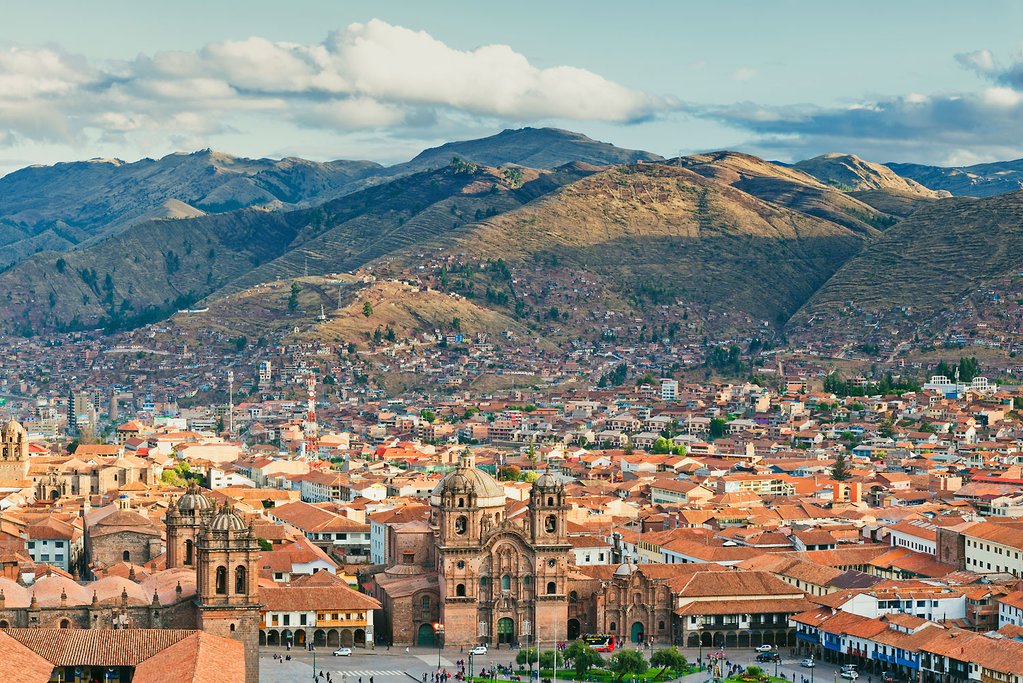
In the morning, transfer to the Puerto Maldonado airport for your flight to Cusco. This ancient city is the former capital of the Inca empire, which reigned from the 13th to 16th centuries after conquering the Killke settlement on the same location.
Remember: you will be 11,000 feet (3,000 m) above sea level, so take it easy and remember to drink lots of water. Since Cusco was designed by the Incas as a city for walking, start your exploration of the narrow stone alleyways on foot. Take a walk through the plaza — if the weather is beautiful, it's a perfect place to sit on a balcony and have a cup of coca tea while adjusting to the elevation.
Suggested activities include:
- Visit the Coricancha, also known as "The Temple of the Sun." The temple was built by the Incan Emperor Pachacutec (1438 - 1572), and after the arrival of the Spaniards became the basis for the construction of the Santo Domingo Convent.
- See the Cathedral, the most imposing monument in the central Plaza de Armas and a repository for Cusco's colonial art. Its construction lasted for almost 100 years, beginning in 1560 and ending in 1654.
- Walk to Sacsayhuamán and next-door Quenqo, both archaeological complexes used mostly for religious and agricultural rituals, located 2.5 miles (4 km) from the city of Cusco. Built by the Killke people, Sacsayhuamán is a marvel of ancient architecture, a monolithic fortress built from giant blocks of stone, the origins and assembly of which remain a mystery.
- Discover the elaborate Puca Pucara ruins—an architectural complex of alleged military use with multiple plazas, baths, aqueducts, walls, and towers. It is believed that the entourage of the Incan emperor used it while he stayed at Tambomachay, the elaborate estate and baths nearby.
- Explore San Blas, an old bohemian quarter famous for its picturesque white walls, blue doors, and creative artisan community.
- Experience the legendary Mercado Central de San Pedro, a large and diverse market famous for its mouth-watering fruit juices, home-style meals, medicinal herb stalls, and rows of various meats, breads, vegetables, and other necessities.
- Eat dinner at a local Peruvian restaurant and sample local flavors and cooking techniques—crackling pork, pickled vegetables, seasonal flavors, bread baked in earthen ovens, roasted vegetables, and sweet donuts make for a delicious and filling meal.
Day 7: Cusco City Tour

Today's tour will begin at the local San Pedro Market. The locals shop at this market every day in order to stock up on produce and groceries making this market experience as authentic as Peru gets. The market is located indoors and includes many different food stalls and vendors. Be sure to try their endless selection of fresh fruit smoothies, which are the perfect refreshing treat.
From the market, you will head to the most important temple of the Inca Empire, the Sun Temple, known as Qoricancha. Here, you can observe detailed and intact architecture, and within the temple, you will see smaller temples dedicated to the moon, rainbow, stars, lightning, and thunder, among others.
From Qoricancha, you will walk to an important religious site called Sacsayhuaman, which features immense stones. Although the site was religious, the Spanish considered it a military fortress because of its location and the way it was built. After your tour, head back to your hotel for some rest.
Day 8: Tour the Sacred Valley: Cusco - Pisac - Ollantaytambo
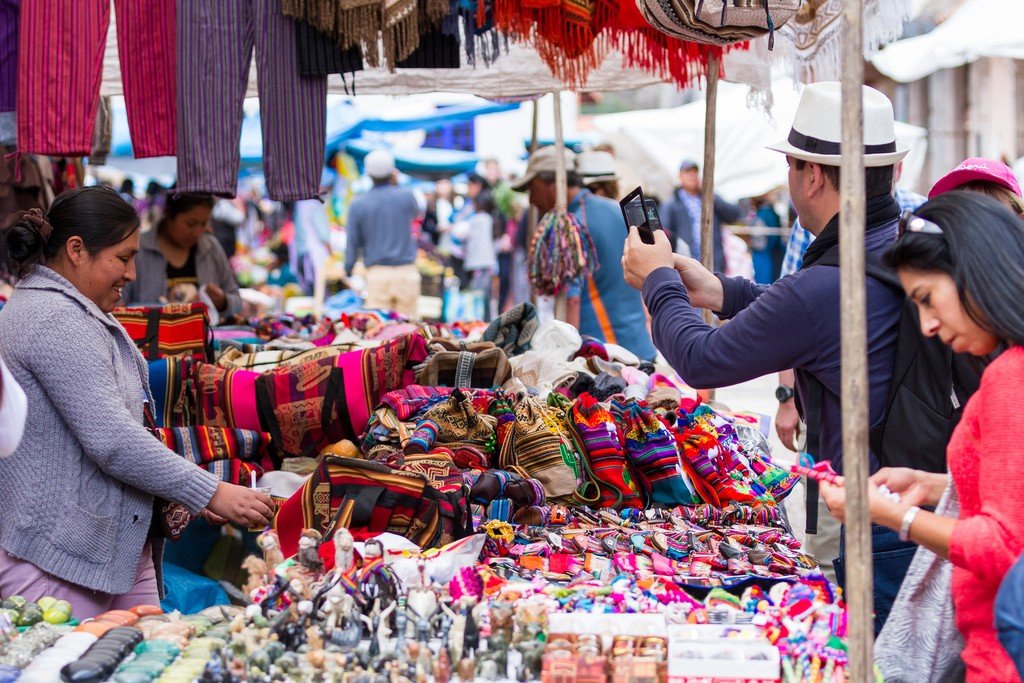
We'll leave our hotel in Cusco around 8:30 am for our drive into the Sacred Valley en route to Pisac, a village known for its traditional market and immense Inca fortress. During our visit, we will have plenty of opportunities to stop for photos as we pass terraces, irrigation canals, and picturesque mountain views.
In the afternoon, we will depart for the town of Ollantaytambo, which contains some of the best-preserved Inca architecture in the entire Sacred Valley. Roam the winding alleys and vast plazas and gaze upon a marvelous llama-shaped ruin before heading to a local hotel for the night.
Day 9: Maras & Moray Tour & Train to Aguas Calientes

This morning, you'll depart from your hotel in Ollantaytambo for your journey to Moray. Along the way, you will see the snow-capped peaks of the Andes, lush yellow fields of wheat, and some villages. Upon arrival in Moray, you'll see the three famous amphitheater-like terraces made by the Incas. These terraces are carved deep into the earth in the shape of a bowl. It is believed that the Incas once used these terraces as agricultural laboratories to determine the optimal conditions for growing crops.
When you are done exploring Moray, you will head about two miles away, to the salt mines of Maras (Salineras de Maras). This village is known as a former salt-producing center and is thought to date back to pre-Incan times. There are over 3,000 salt pools carved into the mountainside, that are filled daily by a stream of water.
Once you are done with the visit, you will head back to Ollantaytambo in time to catch your train to Aguas Calientes (Machu Picchu town).
Day 10: Machu Picchu Excursion: Aguas Calientes - Machu Picchu - Cusco

Get an early start to beat the crowds and get the best views of the ancient ruins. From Aguas Calientes, it's an easy 25-minute bus ride up to the Machu Picchu ruins.
This 15th-century Inca citadel is located at 7,970ft (2,430 m) and is a masterpiece of engineering that served as a sanctuary and retreat for the Incan Emperor Pachacutec and his royal court. Machu Picchu, which means "Old Mountain," is considered a World Heritage Site by UNESCO and is one of the new Seven Wonders of the World.
Built as a seasonal residence for the Inca family, Machu Picchu was rarely home to more than 800 people, and during the royals' absence, a mere 100 servants would remain at the site to maintain the grounds. Machu Picchu was abandoned 100 years after construction due to the Spanish conquest and remained largely hidden to the outside world until the early 20th century.
Your guide will lead you around the site and explain the different buildings and curious corners of the building complex. Approximately one-third of the site has been reconstructed into its original structure, giving visitors a sense for the grandeur and artistry of the original citadel.
After the tour, take the bus back to Aguas Calientes for lunch and then board the train to Ollantaytambo. Upon arrival in Ollantaytambo, meet your driver for your transfer back to Cusco.
Day 11: Rainbow Mountain (Mount Vinicunca) Hike

Today will begin with an early pick-up from your hotel in Cusco for the 3.5-hour drive to the start of the trek.
When we reach the trailhead, we'll enjoy some breakfast before starting the hike. After breakfast, we will begin the hike from Chillca, at 3,700 m/12,139 ft elevation. From here, it will be a 4-hour, uphill hike to reach the famous Rainbow Mountain.
Along the way, you will enjoy amazing views of the Andes, glacial peaks, red mountains, rocky hills, along with llamas and alpacas grazing along the valley. Once you arrive at the top of Rainbow Mountain, you will have enough time to absorb the majesty of the red mountains that surround this area. You will also see amazing views of the valleys and Ausangate Glacier Peak in front of you. Ausangate is the tallest mountain of the Cusco region (just under 21,000 ft elevation) and is part of the Cordillera Vilcanota Range.
After taking in the view, we'll descend back to our car and driver for the drive back to our hotel in Cusco.
Day 12: Arriving in Puno: Cusco - Puno

Transfer to the Cusco airport to catch your flight to Juliaca and transfer to the city of Puno, located on the shores of Lake Titicaca. Lake Titicaca is the largest lake in South America. Although many bodies of water exist at higher elevations, Lake Titicaca's surface elevation of 12,507 ft (3,812 m) makes it the highest lake in the world that is navigatable by large commercial vessels.
Lake Titicaca is a hotbed of ecological diversity, archaeological ruins, tourism, and modern-day farming communities. The coastline outside of Puno is home to the Uros people, who live on floating reed islands made from the totora plant, a thick buoyant reed. Totora is used to make everything from homes and boats to the islands nearly half the size of a football field. The Uros people offer guided tours to their homes and sell traditional handicrafts to supplement their traditional hunting and fishing economy.
Several other ethnic groups, most notably the Quechua and Taquileños, inhabit several of the other larger islands on the lake, the majority of which have no electricity or paved roads. Visitors are welcome to select homes on this island for homestays.
Photographers and naturalists will enjoy seeing some of the many hundreds of aquatic and bird species, many of which are found nowhere else on earth.
It's a good idea to take it easy on your first day and acclimatize the elevation. Drink lots of water and make sure to rest. After arrival, check out some of the town's restaurants and cafes for a fresh and local dining experience.
Day 13: Lake Titicaca Tour: Uros Floating Islands & Taquile Island
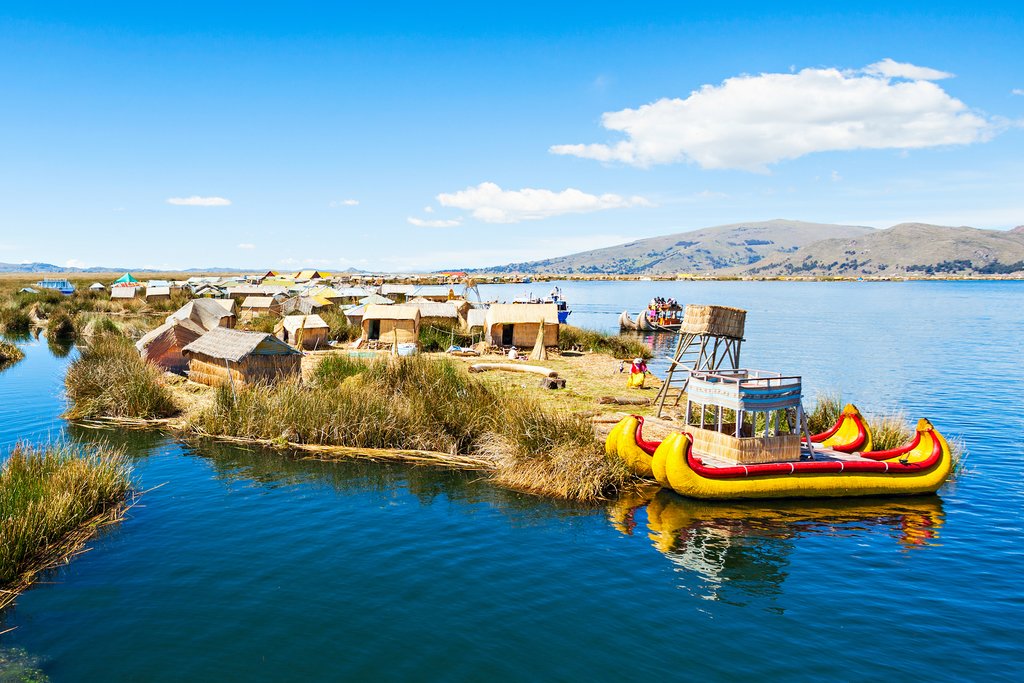
Be sure to fuel up at breakfast this morning, as this full-day experience will last around 9 hours.
Your first stop will be to one of the floating Uros islands. It is believed that the Uros were one of the first ethnic groups to populate the Andean region. The Uros people live on man-made floating islands, which are constructed out of the totora reeds that grow in abundance around the lake. During your visit to these islands, you'll learn about their everyday life and traditions.
After your visit to the floating island, you'll head to lunch at a local restaurant on Taquile Island*. Quinoa soup, fresh fish caught in the lake, and vegetables are a typical lunchtime meal in Taquile. After lunch, explore Taquile Island. This island remained mostly isolated from the outside world until the 1950s, and as a result, the Taquileños follow a very different way of life. On the island, decisions are made communally, there are no cars, and there is very little electricity - just the way the Taquileños like it. Taquile is also famous for the exquisite weavings created by local artists. Traditionally, the men spin the thread, and the women design and weave each piece. You'll have the opportunity to learn about the lives and traditions of the Taquileños, and appreciate the stunning views of Lake Titicaca from the island's shores.
In the evening, walk back to the main dock in Taquile and board a boat back to Puno. Upon arrival in Puno, transfer to your hotel for the evening.
*Note: Visiting Taquile requires a strenuous climb up 500 steps to the main part of the island. Elevation ranges from around 12,000 ft (3660 m) at the lakeshore up to 13,000+ ft (3960 m) at the highest point.
Day 14: Fly from Puno to Lima, Depart Peru

Today is your last day in Peru! You will be met at your hotel for a transfer to Juliaca Airport, where you will catch your flight back to Lima and then transfer to your international flight back home or to your next destination. ¡Buen viaje!






